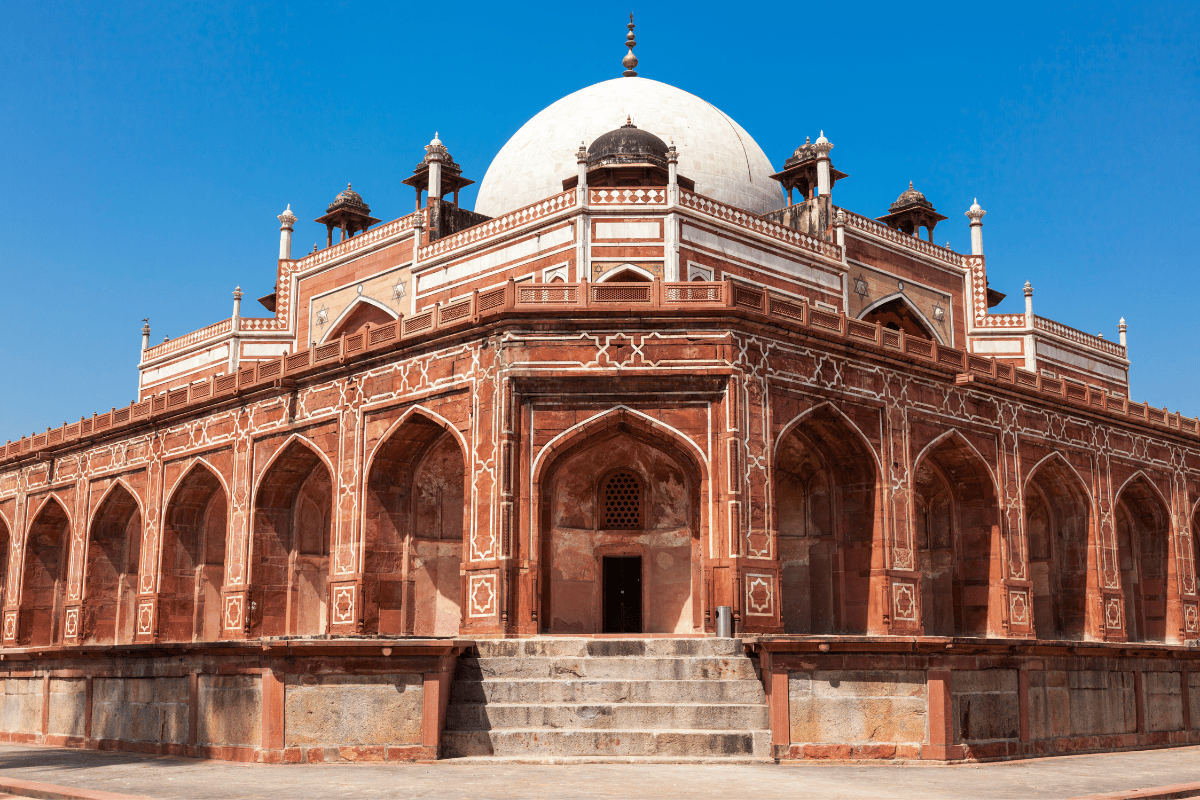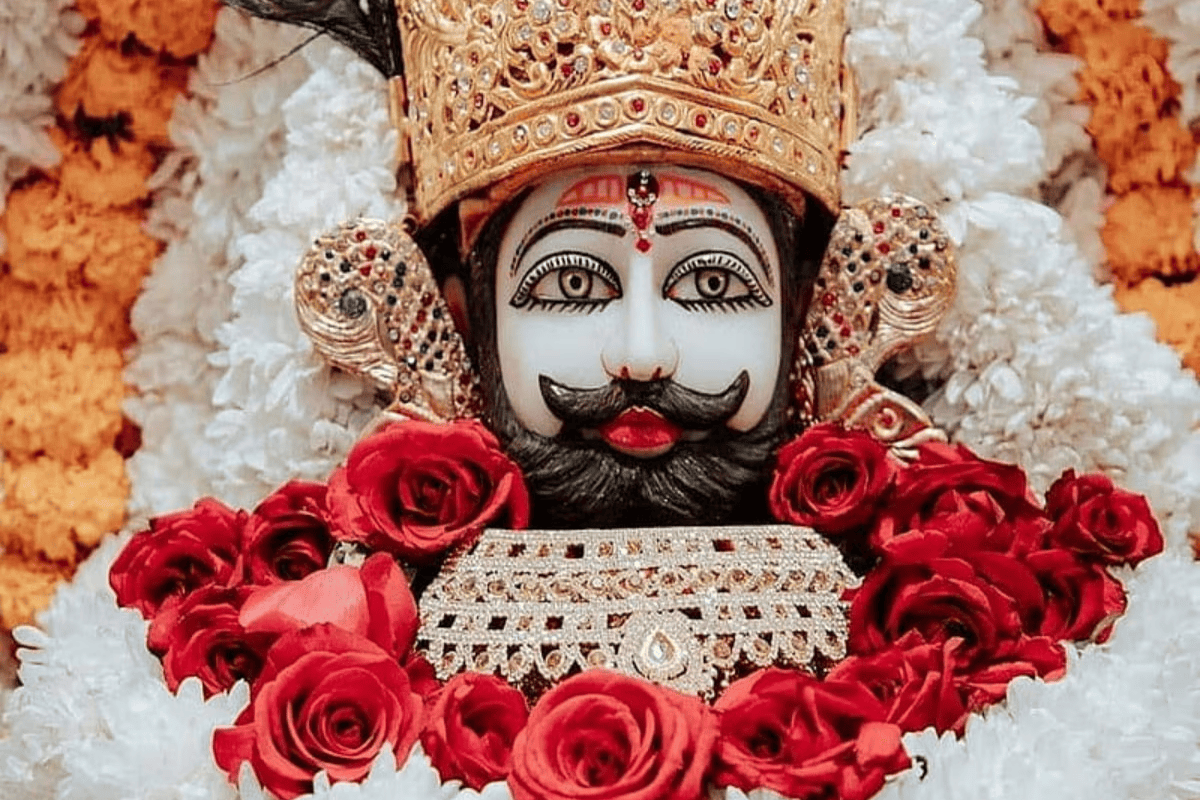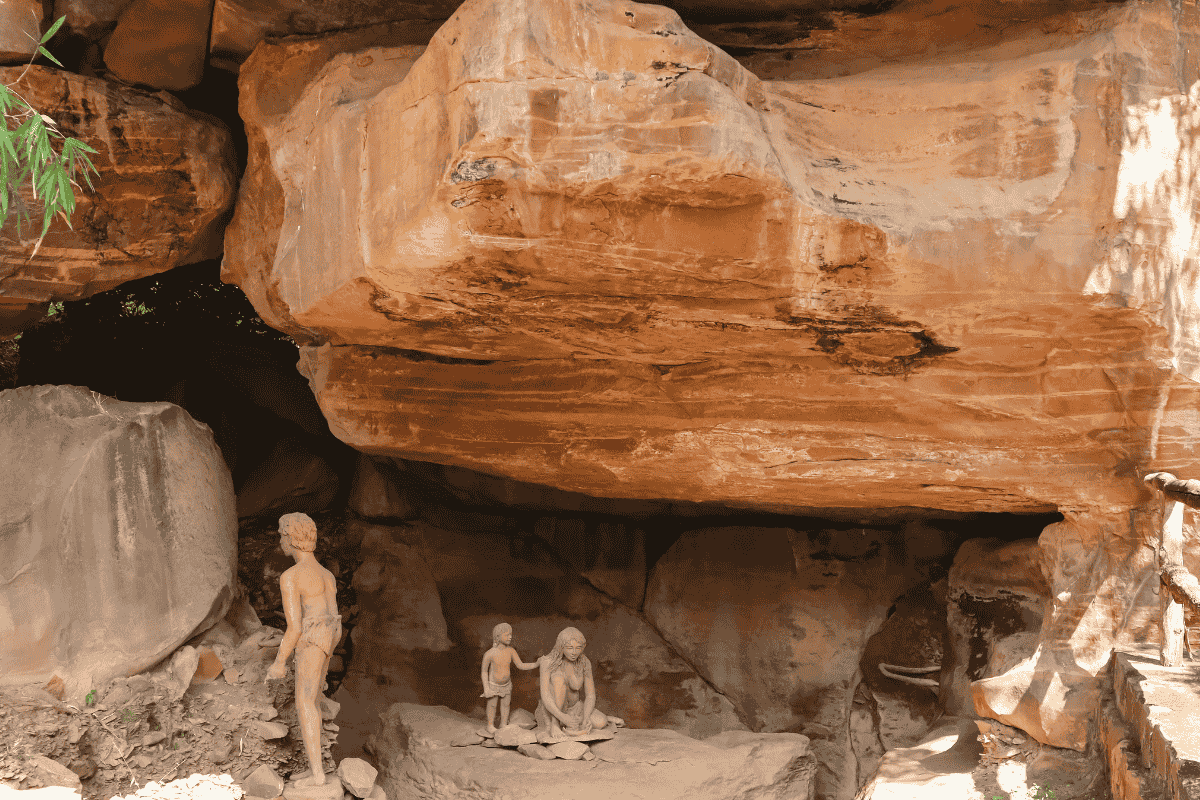Humayun’s Tomb (Humayun Ka Maqbara) Delhi: History, Timings, Entry Fee & Travel Guide

If you’re someone who loves history, beautiful architecture, or just peaceful places in Delhi, then Humayun’s Tomb is a must-visit. Located in the heart of the city, this grand monument is not just a tomb—it’s a timeless symbol of Mughal architecture and a UNESCO World Heritage Site. Built in memory of Mughal Emperor Humayun, this red sandstone structure with its big dome, gardens, and Mughal charm, gives you a glimpse into India’s royal past. Whether you’re a local explorer or a tourist, this place will surely leave you amazed with its beauty and calm atmosphere.
Table of Contents
History of Humayun’s Tomb – The Story of a Mughal Emperor & His Final Home
Humayun was the second emperor of the Mughal Empire in India. He was the son of Babur, the founder of the Mughal dynasty. Born in 1508, Humayun became emperor in 1530 after his father’s death. But his rule was not very smooth. He faced many battles, lost his empire once, and had to take shelter in Persia (present-day Iran). But later, with support from the Persian empire, he reclaimed the throne of Delhi.
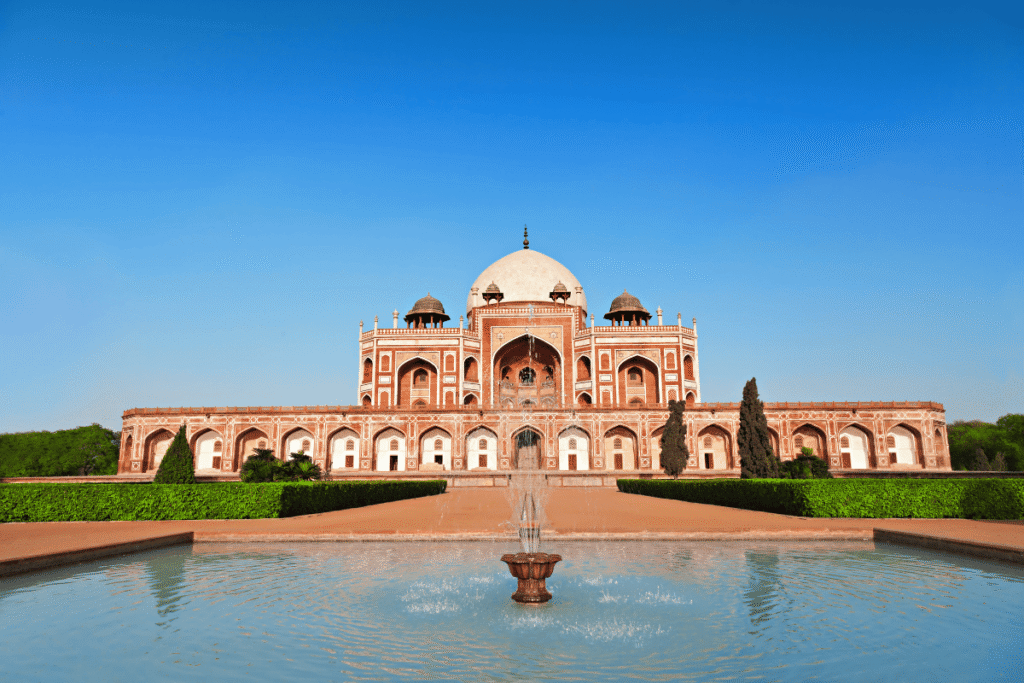
Sadly, his return didn’t last long. In 1556, just a year after winning back his empire, Humayun died after falling from the steps of his library in Delhi. He was only 48 years old.
Why Was the Tomb Built?
After Humayun’s sudden death, his first wife and chief consort Empress Bega Begum (also known as Haji Begum) decided to build a grand tomb in his memory. She wanted it to be beautiful, peaceful, and fit for an emperor.
So, with the help of Persian architects, she commissioned the construction of the tomb in 1565 — just nine years after Humayun’s death. The architect of the tomb was Mirak Mirza Ghiyas, a Persian architect who brought in Persian design style, which later influenced other famous monuments like the Taj Mahal.
Importance of the Tomb
Humayun’s Tomb is India’s first garden-tomb, built in the Persian style with charbagh layout (four-square garden with water channels). It was the first time red sandstone was used on such a large scale in a Mughal building.
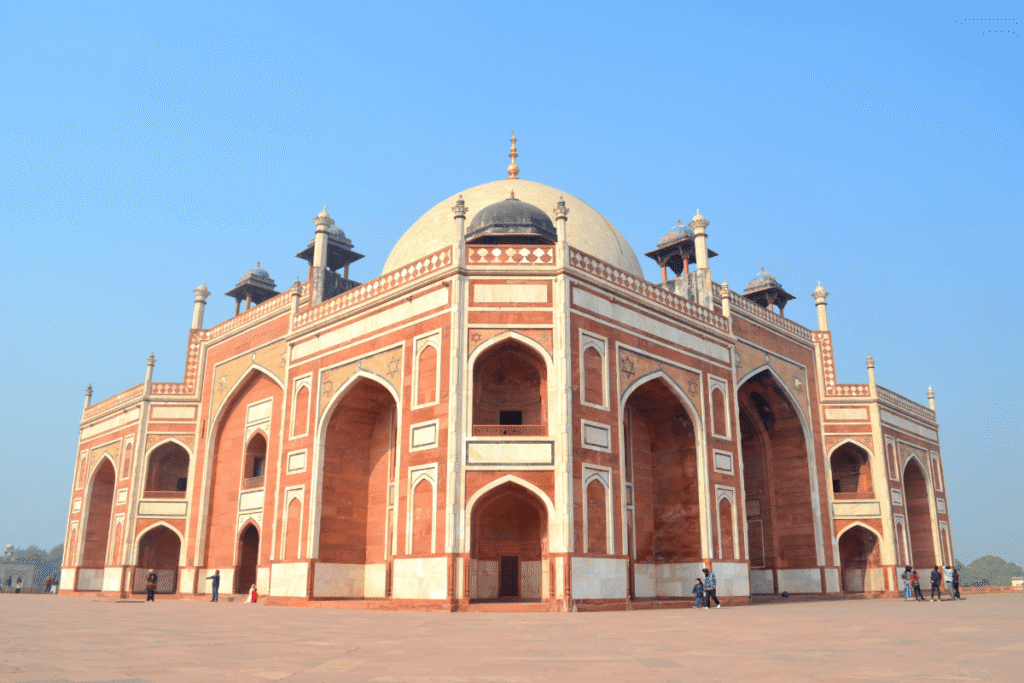
This tomb set the foundation for later Mughal architecture and inspired many other famous monuments, including the Taj Mahal. Because of its design, beauty, and historical value, it was declared a UNESCO World Heritage Site in 1993.
So, Humayun’s Tomb is not just a place where a king rests — it is a piece of India’s royal history, a gift of love from a wife to her husband, and a symbol of how Mughal art and architecture began in India.
Architecture of Humayun’s Tomb – A Masterpiece of Mughal Design
Humayun’s Tomb is one of the most beautiful and important examples of Mughal architecture in India. It was the first garden-tomb in the country and the first big structure to use red sandstone on such a grand scale.
Mughal + Persian Style
The tomb’s design is a mix of Persian and Indian styles, created by Persian architect Mirak Mirza Ghiyas. The most special part of the design is the Charbagh layout – a large square-shaped garden divided into four parts, with pathways and water channels in between. This design represents heaven as per Islamic beliefs.
About Grand Tomb Structure
- The tomb is built on a high platform with small stairs leading up to it, which gives it a royal look.
- The main structure is made of red sandstone, while the marble dome on top adds a beautiful white contrast.
- The big central dome is around 42 meters high and can be seen from far away.
- There are arched entrances on all four sides, and the walls have geometric patterns and floral designs carved on them.
Inside the Tomb
Inside the tomb, the central chamber houses the cenotaph (grave) of Humayun, although the actual grave is in the basement below. Along with him, many other Mughal family members like his wives, Dara Shikoh (Shah Jahan’s son), and some later Mughal rulers are also buried here. In total, over 100 Mughal royal graves are present here, which is why the tomb is sometimes called the “Dormitory of the Mughals.”
Surrounding Structures
The tomb complex also includes:
- Barber’s Tomb (Nai-ka-Maqbara) – believed to be of the royal barber
- Isa Khan’s Tomb – an earlier tomb built before Humayun’s, in Afghan style
- Arab Serai – where Persian workers and craftsmen stayed
- Bu Halima’s Garden and Tomb – a mysterious structure inside the complex
With its grand design, peaceful gardens, and historical feel, Humayun’s Tomb is a perfect example of royalty, respect, and art combined in one place. It not only influenced the Taj Mahal but also changed how tombs were built in India forever.
Visiting Timings
Open daily from sunrise to sunset (generally 6:00 AM to 6:00 PM)
Entry Fee
- Indian citizens & SAARC/BIMSTEC nationals: ₹35–40 per person .
- Foreign tourists: ₹500–600 per person .
- Children (under 15 years): Free entry .
- Photography: Still camera use is free, but video filming costs ₹25 extra
Other Tombs & Monuments Inside Humayun’s Tomb Complex
1. Tomb of Isa Khan
This is one of the oldest monuments in the complex, built in 1547 — even before Humayun’s Tomb. Isa Khan was a noble in Sher Shah Suri’s court, and his tomb is built in Afghan style with a circular dome and beautiful jali work (stone lattice screens). The structure is surrounded by a garden and has a peaceful charm.
2. Barber’s Tomb (Nai-ka-Maqbara)
This smaller tomb is located near Humayun’s Tomb and is believed to be that of the royal barber. Not much is known about who exactly is buried here, but it shows that even important service people had a respected place during Mughal rule.
3. Tomb of Hamida Banu Begum
Hamida Banu Begum was the wife of Humayun and mother of Emperor Akbar. Her tomb is also inside the same complex, but it is not a separate structure. She is believed to be buried close to Humayun, symbolizing their strong bond.
4. Graves of Mughal Family Members
Humayun’s Tomb complex has over 100 other graves, making it one of the largest tomb complexes in India. These include:
- Dara Shikoh (son of Shah Jahan)
- Farrukhsiyar and Rafi Ul-Darjat (later Mughal emperors)
- Other princes, wives, and royal family members
Because of so many graves, the complex is often called the “Dormitory of the Mughals.”
5. Arab Serai
This was a kind of rest house or serai built by Haji Begum (Humayun’s wife) for Persian workers and travelers. Though it’s in ruins now, it still adds historical value to the site.
6. Bu Halima’s Tomb and Garden
Another smaller and slightly mysterious tomb inside the complex. Historians are still not sure who Bu Halima was, but her tomb is surrounded by a charming little garden.
Visiting the Humayun’s Tomb complex feels like walking through a royal Mughal-era city, full of stories, calmness, and architecture from the past.
Final Words
Humayun’s Tomb is more than just a monument – it’s a beautiful blend of history, art, and love. From its peaceful gardens to its grand red sandstone walls, every part of the tomb tells a story from the past. Whether you’re a history lover, a student, or just someone looking for a calm place in the middle of Delhi, this UNESCO World Heritage Site is a must-visit. Spend a quiet morning here, walk through the green gardens, and take in the Mughal charm that still lives on after hundreds of years.


